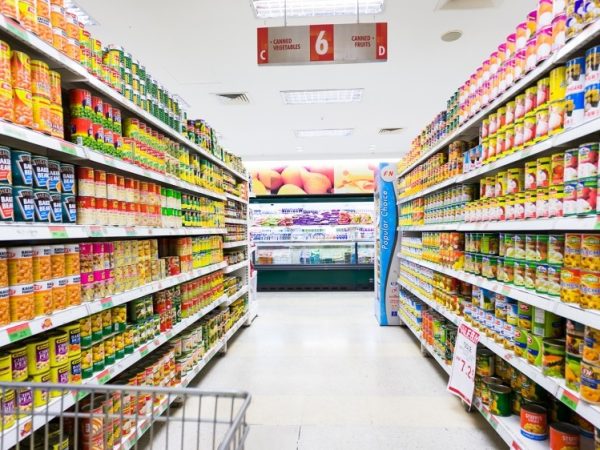Store Check: A Comprehensive Guide to Monitoring Retail Performance

Retail success doesn’t just happen—it requires constant monitoring and adjustment to meet customer needs and adapt to market trends. This is where store checks come in. A store check is an essential practice for brands, retailers, and managers to evaluate store performance, merchandising, and customer experience.
In this article, we’ll explore what a store check is, why it’s important, the key elements to evaluate, and how to conduct effective store checks to boost retail efficiency.
What Is a Store Check?
A store check, also known as a retail audit, is a systematic process of evaluating in-store operations, product displays, customer service, and overall retail performance. It involves visiting a store (or multiple stores) to inspect:
- Product availability and stock levels
- Shelf placement and merchandising
- Compliance with branding guidelines
- Pricing accuracy
- Competitor products and promotions
Store checks are conducted by store managers, brand representatives, or third-party auditors to identify opportunities for improvement and ensure that the store aligns with the company’s goals.
Why Are Store Checks Important?
Store checks are essential for maintaining high retail standards and staying competitive in the market. Here’s why they matter:
Ensure Compliance
Store checks help verify that the store is adhering to company policies and guidelines, including branding, pricing, and promotional standards.
Optimize Inventory Management
By monitoring stock levels and product availability, store checks ensure shelves are fully stocked, preventing lost sales due to out-of-stock items.
Improve Customer Experience
Evaluating the store layout, cleanliness, and staff interactions during a store check can help identify ways to enhance the shopping experience.
Monitor Competitors
Store checks often include observing competitor displays, pricing, and promotions, providing valuable insights to stay ahead in the market.
Boost Sales
When stores are properly merchandised, with clear pricing and promotional materials, it increases the likelihood of converting shoppers into buyers.
Key Elements to Evaluate During a Store Check
To ensure a comprehensive evaluation, focus on the following areas during your store check:
Store Layout and Visual Merchandising
- Display Quality: Are products displayed attractively?
- Shelf Placement: Are high-demand products placed at eye level?
- Signage: Is branding consistent, and are promotional signs visible?
- Cleanliness: Is the store tidy and well-maintained?
Inventory and Stock Levels
- Availability: Are popular products in stock?
- Replenishment: Are shelves regularly restocked?
- Stock Rotation: Are perishable items arranged based on expiration dates?
Pricing and Promotions
- Price Accuracy: Are prices on the shelf tags consistent with the checkout system?
- Promotions: Are discounts or offers displayed prominently and applied correctly?
- Competitor Pricing: How does the store’s pricing compare to nearby competitors?
Customer Service
- Staff Behavior: Are employees friendly and approachable?
- Staff Knowledge: Can staff assist with product information and recommendations?
- Checkout Process: Are wait times reasonable, and are cashiers efficient?
Competitor Analysis
- Product Comparisons: What are competitors offering that’s unique or different?
- Promotions and Discounts: Are competitors running special offers that could attract customers?
- In-Store Experience: How does your store’s atmosphere compare to others?
How to Conduct an Effective Store Check
Conducting a store check requires preparation, a clear methodology, and actionable insights. Follow these steps for a successful audit:
Define Objectives
Determine the purpose of your store check. Are you evaluating product placement, customer service, or competitor pricing? Having clear objectives ensures a focused audit.
Create a Checklist
Prepare a detailed checklist of items to evaluate, including merchandising, inventory, and pricing. This will ensure nothing is overlooked during the store visit.
Schedule Regular Visits
Conduct store checks on a regular basis to identify trends and address recurring issues. Schedule unannounced visits to get an accurate picture of everyday operations.
Use Technology for Data Collection
Leverage digital tools like retail audit apps or tablets to collect and record data in real time. These tools can streamline the process and make reporting easier.
Engage with Store Staff
Speak with employees to gain insights into day-to-day challenges, inventory issues, and customer feedback. Their input can provide valuable context for your findings.
Analyze Data and Take Action
After completing the store check, review your findings and identify actionable steps to address any issues. Share your recommendations with store managers and relevant teams.
Tools for Store Checks
Several tools can make store checks more efficient and accurate:
- Retail Audit Apps: Tools like YOOBIC, Repsly, and SimpliFied streamline the auditing process by enabling real-time data collection.
- Inventory Management Software: Systems like TradeGecko and NetSuite help track stock levels and replenishment needs.
- Mystery Shopping Services: Companies like Market Force provide mystery shoppers to evaluate store performance from a customer’s perspective.
Common Challenges in Store Checks and How to Overcome Them
Inconsistent Execution
- Problem: Store checks conducted by different individuals may vary in thoroughness.
- Solution: Use standardized checklists and train staff on the importance of consistent evaluations.
Lack of Real-Time Data
- Problem: Delays in data collection can make it difficult to take immediate action.
- Solution: Use digital tools to record and share findings instantly.
Resistance from Staff
- Problem: Store employees may feel scrutinized or judged during checks.
- Solution: Frame store checks as opportunities for improvement rather than criticism.
Benefits of Regular Store Checks
| Benefit | Description |
| Improved Efficiency | Identifies bottlenecks in inventory management or customer service. |
| Enhanced Brand Image | Ensures the store consistently reflects the company’s branding and quality standards. |
| Customer Retention | Improves customer satisfaction through better service and product availability. |
| Competitive Advantage | Provides insights into competitor strategies to stay ahead in the market. |
Conclusion
Store checks are a vital part of retail management, ensuring that stores operate efficiently, meet customer expectations, and stay ahead of competitors. By regularly evaluating merchandising, inventory, pricing, and customer service, businesses can identify opportunities for improvement and drive sales.
With the right tools and a systematic approach, store checks can transform your retail operations and enhance the shopping experience for your customers.
Start implementing regular store checks today and unlock your store’s full potential!
FAQs
1.What is a store check?
A store check is a systematic evaluation of retail operations, including inventory, merchandising, customer service, and compliance with branding standards.
2.Who conducts store checks?
Store checks can be conducted by store managers, brand representatives, third-party auditors, or mystery shoppers.
3.How often should store checks be conducted?
Store checks should be conducted regularly—weekly, monthly, or quarterly—depending on the store’s size and goals.
4.What are the key areas to focus on during a store check?
Focus on store layout, inventory levels, pricing, customer service, and competitor analysis during a store check.
5.Can technology improve the store check process?
Yes, tools like retail audit apps and inventory management software streamline data collection and analysis, making store checks more efficient.
Also read: The Ultimate Guide to a Pat Session: Techniques and Benefits










